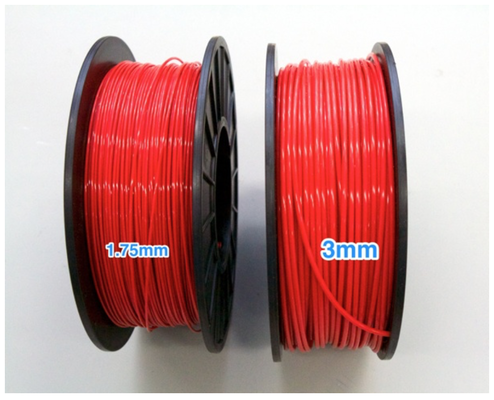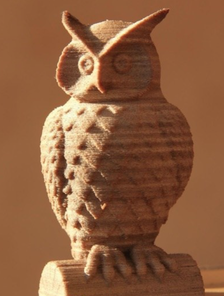Differences in Plastic Materials
ABS
ABS Plastic is the same plastic used by Legos. It stands for: Acrylonitrile Butadiene Styrene. This plastic was one of the first materials used for desktop 3D printers. It is produced from natural gas and petroleum.
ABS Plastic is the same plastic used by Legos. It stands for: Acrylonitrile Butadiene Styrene. This plastic was one of the first materials used for desktop 3D printers. It is produced from natural gas and petroleum.
Pros
Cons
PLA
PLA is a plastic that is made from corn. PLA stands for Polylactic Acid and has a lower melting point than ABS which means you can use lower temperatures on your 3D printer when using it. PLA is biodegradable and compostable. In the appropriate conditions, it will break down in about 45-90 days. Another environmentally consideration of PLA is that it is can be recycled and, when the right process is used, the purified recycled PLA can be used again with no loss of its original properties. Resource: Safety assessment of polylactide (PLA) for use as a food-contact polymer.
Pros
Cons
Flexible
There are a lot of new materials being created and experimented with for 3D printing. One of the most exciting is flexible filaments. Here is a video discussing one such product called NinjaFlex.
- Sturdy and hard
- Withstands heat better, this means a higher temperature is needed when printing but it will hold up to higher heat applications than PLA.
Cons
- More damaging to the environment (made from oil)
- Smells like melted plastic when printing
- Requires a heated platform
- Prints tend to curl at the bottom
- Not food safe
PLA
PLA is a plastic that is made from corn. PLA stands for Polylactic Acid and has a lower melting point than ABS which means you can use lower temperatures on your 3D printer when using it. PLA is biodegradable and compostable. In the appropriate conditions, it will break down in about 45-90 days. Another environmentally consideration of PLA is that it is can be recycled and, when the right process is used, the purified recycled PLA can be used again with no loss of its original properties. Resource: Safety assessment of polylactide (PLA) for use as a food-contact polymer.
Pros
- Does NOT need a heated print bed
- Environmentally friendly
- Smells like syrup when heating
- Food safe
- non-toxic
Cons
- Has a lower melting point so printed objects can deform in high heat
- Not as strong as ABS
Flexible
There are a lot of new materials being created and experimented with for 3D printing. One of the most exciting is flexible filaments. Here is a video discussing one such product called NinjaFlex.
Other Flexible Filaments
There are other flexible filaments such as MatterHackers Soft PLA.
As we gain more experience using these new materials, we will share our thoughts and update this page.
Filament Comparison
In this video, Sparkfun demonstrates some of the differences between the filaments they carry.
There are other flexible filaments such as MatterHackers Soft PLA.
As we gain more experience using these new materials, we will share our thoughts and update this page.
Filament Comparison
In this video, Sparkfun demonstrates some of the differences between the filaments they carry.
Filament Size
Filament comes in two main sizes: 1.75mm and 3mm. Most printers will only take one size of filament so make sure you use the right size for your printer. As far as functionality goes, there doesn't seem to be much difference between the two. Some report that 1.75mm gives you better accuracy and others say that the 3mm flexible filament is much easier to work with than the 1.75mm stuff.
Filament comes in two main sizes: 1.75mm and 3mm. Most printers will only take one size of filament so make sure you use the right size for your printer. As far as functionality goes, there doesn't seem to be much difference between the two. Some report that 1.75mm gives you better accuracy and others say that the 3mm flexible filament is much easier to work with than the 1.75mm stuff.
More
There are other exciting materials being tested with 3D printing such as:
There are other exciting materials being tested with 3D printing such as:
- Wood-like materials
- Color changing plastics
- Nylon





